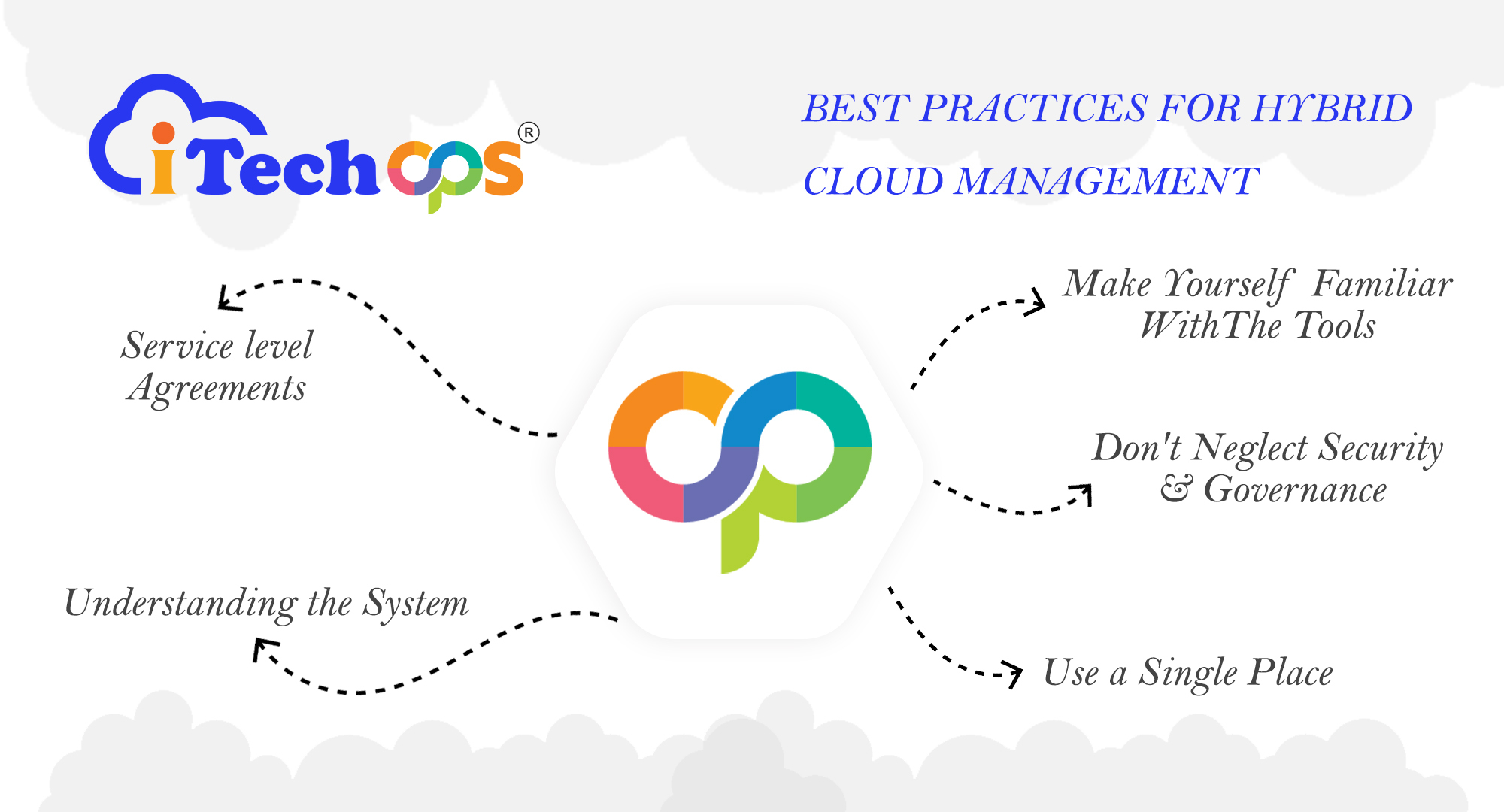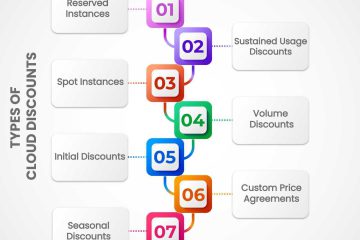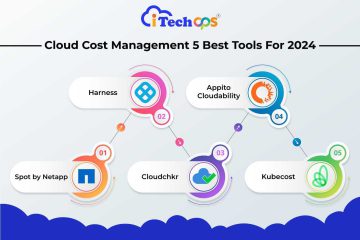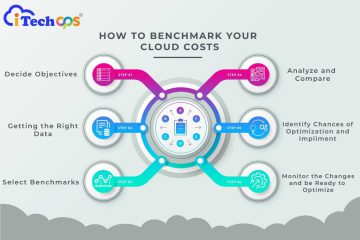Hybrid Cloud Management- Best Practices!

Hybrid cloud management means pairing traditional cloud systems with modern ones. It’s called hybrid cloud management when we manage our own storage and cloud resources together.
The growing popularity of hybrid cloud setups is due to the increasing need for a balanced, flexible, cost-effective IT infrastructure. It combines the benefits of private and public clouds to meet the rapidly changing needs of modern businesses.
While managing hybrid environments, one has to deal with several complexities, such as finding the correct way to integrate both systems, ensuring private data security, finding the right professional for the work, and much more.
In this article, we will learn about some of the ideal practices for hybrid cloud management.
Industries benefitted from cloud management programs
Industries that must follow strict privacy rules set by the local or central government can benefit greatly from it.
In the case of hospitals and other medical-related businesses, hybrid cloud systems are of great use. They can use their servers to keep patients’ private data or get cloud services.
Nowadays, even schools are required to store the private data of their students with proper web security. They can also store all this data on their servers or get cloud services.
Similarly, whichever business requires private data storage must protect the same.
As technology grows, cloud providers offer more efficient security services that follow all government rules and regulations. Cloud services allow people to shift their focus to other important things while their data is secure.
Let’s look at some of the best practices for hybrid cloud management.
Best practices for hybrid cloud management
To implement any technique, you must ensure that it is rightly done.
1. Understanding the system
Firstly, you need to understand what these data management applications do—their user engagements, how they manage data, and more. You need to know the specific network configurations required for the cloud to work seamlessly. Certain applications can handle sensitive information with next-level security, while others may have relaxed security needs.
Several compliance requirements are associated with different applications, so once you understand all this, it will be easier to operate a hybrid cloud environment.
2. Service Level Agreements
A service level agreement is a promise between the people using a hybrid cloud system, the one managing it, and the companies providing these services. These agreements assure the users of what kind of services they will be getting, and if they don’t get what they are promised, there can be consequences.
In easy words, you can call them as a guide for setting up and maintaining services in a hybrid cloud environment.
3. Use a single place
The only way to simplify managing a hybrid cloud is by investing in tools that let you manage everything from one place. This way, you won’t have to juggle between interfaces such as Amazon Web Services, Google Clouds, or IBM’s Cloud. You can use a single dashboard to handle all that.
This way, you don’t have to remember the ins and outs of each cloud system and can also move with flexibility from one interface to another.
4. Make yourself familiar with the tools
Knowing the tools that can help you when managing a hybrid cloud is important. These tools cover a range of tasks, like handling how different software systems talk to each other, keeping track of resources, ensuring everything is running smoothly, and coordinating development and operations. There are also tools for security, network control, managing the specific features of different platforms, and overall cloud management.
Choosing the right tools depends on your plan and needs; sometimes, it might involve using custom-made tools. The main goal is to make things automated and efficient. If tasks can’t be automated with the tools you have, or if it’s too expensive, then a hybrid cloud might not be the best choice for your organization.
5. Don’t neglect security and governance
One of the major concerns of companies providing cloud services is security. As an ideal manager of a hybrid cloud, you must ensure that the security of the cloud data is never breached. You must use new tools to put labels on data and devices.
It helps control who can get into what and when they can do it. It’s like having a security guard ensuring only the right people can access certain things at certain times.
How can you balance system security with performance?
The most popular way to secure data nowadays is through data encryption techniques. However, in some cases, the encrypted data can slow down your hybrid cloud system’s overall processing and speed. To counter this, consider investing in performance-enhancing or performance-monitoring tools.
Be aware of the policies and rules
Hybrid cloud managers must be familiar with the rules and policies governing how the cloud system should operate. This knowledge is crucial to avoid any disruptions in operations. It will ensure you follow the written guidelines for managing your cloud system, which is a key responsibility.
Conclusion
Having Hybrid cloud management is a strategic decision that most businesses follow. It helps the stakeholders understand workloads, ensure compliance, or address performance concerns.
As more businesses adopt hybrid cloud solutions, those who follow these best practices will keep their systems secure and efficient and be well-prepared to take full advantage of hybrid cloud technology’s benefits in our ever-changing digital world.



0 Comments